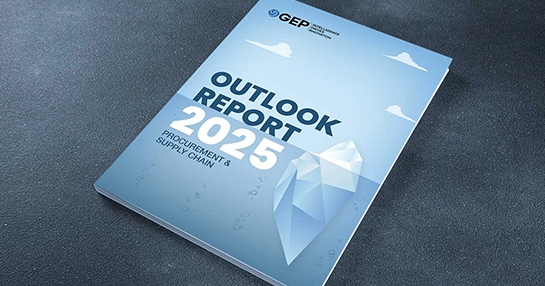
How Category Management is Redefining Procurement With AI
- AI-enhanced category management elevates procurement to strategic spend mastery, delivering double digit initial cost reduction.
- Organizations leverage AI to anticipate market shifts and model sourcing strategies before implementation.
- True spend mastery can be achieved when procurement gains strategic influence, with leaders seeking their input on major decisions.
April 21, 2025 | Procurement Strategy
Organizational spend has evolved from basic cost control to a sophisticated strategic discipline. Category management stands as the cornerstone of this transformation, empowering procurement teams to command their spending with unprecedented precision and foresight.
With the mix of artificial intelligence into category management, it has become incrementally easier to analyze spending patterns across thousands of transactions, identify opportunities invisible to the human eye, and predict market shifts before they occur. This mix of strategic methodology and computational power is creating a new template for procurement excellence — one where understanding spend drives competitive advantage and organizational value.
What is Category Management Framework?
Category management represents procurement's most powerful framework for achieving strategic spend mastery. It outdoes traditional purchasing by organizing an organization's expenditure into distinct categories based on supplier markets, internal needs, and value creation potential. Rather than treating each purchase as an isolated event, category management takes a portfolio approach, optimizing spend across the entire organization.
The framework's USP lies in its structured methodology for turning spending into a strategic advantage. AI now supercharges each component: intelligent spend classification algorithms automatically identify category boundaries with greater precision than manual approaches. Machine learning (ML) models analyze spending patterns across business units, revealing consolidation opportunities that so long remained hidden in data silos. Market intelligence platforms continuously monitor supply markets, providing real-time insights into pricing trends, supplier risks, and innovation opportunities.
The best part — AI-powered category management has that ability to transform procurement from a reactive to a predictive function.
Looking for Strategies to Align Category Management With Broader Business Objectives?
Get this whitepaper and explore how AI can position category managers as business enablers
Why is Category Management Framework So Important?
The strategic imperative for spend mastery has never been more urgent. In an environment where supply chains face unprecedented disruption and organizations must balance cost pressure with sustainability mandates, traditional procurement approaches fall short. Category management provides the structured framework needed to navigate this complexity while delivering measurable value.
The financial impact alone justifies investment. Organizations implementing AI-enhanced category management typically achieve 10-15% cost reduction in the first wave of categories addressed. More sophisticated practitioners maintain single digit YoY improvements even in mature categories through continuous AI-powered optimization. And these aren't simple theoretical numbers — they translate directly to bottom-line impact and competitive advantage.
Beyond cost savings, spend control through category management transforms risk management. AI algorithms now analyze thousands of risk signals across global supply chains, identifying potential disruptions before they impact operations. Leading organizations leverage these insights to build resilient sourcing strategies that balance cost optimization with supply security — a critical capability in today's volatile markets.
Another transformative factor is how category management redefines supplier relationships. By identifying strategic partners rather than transactional vendors, organizations gain privileged access to innovation, specialized capabilities, and market intelligence. AI-powered supplier discovery platforms identify potential partners with complementary innovations that procurement teams would never find through traditional methods. This collaborative approach transforms suppliers from cost centers to value drivers, fundamentally redefining procurement's contribution.
What Goes into Creating an Awesome Category Management Framework?
Building an effective framework for strategic spend mastery requires a thorough integration of human expertise, digital capabilities and structured processes — all orchestrated to transform spending data into strategic action.
Executive alignment forms the foundation, with leadership recognizing procurement as a strategic function rather than a support service. Organizations that achieve true control over spend establish cross-functional governance structures where category strategies receive the same attention as product roadmaps or market expansion plans. AI-powered decision support tools enhance these governance processes, simulating the impact of different category approaches on organizational objectives.
The human dimension remains irreplaceable but transformed. Category managers are now combining deep market knowledge with data science skills, leveraging AI as a force multiplier for their expertise. This hybrid approach can translate data insights into compelling category strategies that businesses look forward to embrace.
Technology serves as the enabler of spend mastery at scale. Cloud-based category management platforms with embedded AI capabilities provide the infrastructure for excellence, automating routine analysis while enhancing strategic decision-making. NLP extracts insights from unstructured data like contract terms and supplier communications. Computer vision technology even analyzes product specifications and manufacturing processes to identify standardization opportunities across business units.
Most importantly, leading organizations implement closed-loop systems where AI continuously monitors category performance, automatically flagging deviations from expected outcomes and suggesting adjustments.
All of the aforementioned create a conducive cycle where each procurement decision generates data that improves future decisions, establishing a sustainable competitive advantage through ever-increasing spend mastery.
Don’t Wait To Be Disrupted. Be the Disrupter.
Explore how autonomous AI agents will transform procurement and supply chain in this GEP whitepaper
Key Indicators of an Effective Category Management Framework
The ultimate measure of spend mastery is the procurement function's elevation from tactical buying center to strategic business partner. Several key indicators reveal when this transformation is successful.
Value contribution beyond savings represents the new norm. Organizations with mature category management framework track not just cost reduction but broader business impacts — improved product quality, accelerated innovation cycles, enhanced sustainability metrics, and reduced operational disruptions. AI analytics now quantify these previously intangible benefits, demonstrating procurement's strategic impact in terms that resonate with C-suite executives.
Strategic influence offers another powerful indicator. When business leaders proactively seek procurement's input on major decisions — such as product development, market entry strategies and M&A — it can be said that the category management framework has successfully transformed perception from cost controller to value creator. AI-powered scenario planning enables procurement to model the spend implications of different strategic alternatives, providing insights that shape organizational direction.
Supplier behavior reveals framework effectiveness from an external perspective. Scenarios where suppliers bring their most innovative solutions, invest in relationship-specific capabilities, or share market intelligence, AI-enhanced supplier relationship management systems can track these behavioral indicators across hundreds of suppliers, identifying strategic partners that deserve priority attention.
The most telling indicator could be organizational agility. Companies that have mastered their spend through category management can turn faster when market conditions change. AI-powered alert systems identify supply market shifts, enabling procurement teams to adjust strategies before competitors. This responsiveness transforms procurement from a potential bottleneck to a catalyst for organizational adaptability.
Who Will Lead the Future of Procurement?
The future belongs to organizations that successfully blend human expertise with AI capabilities. Machine learning algorithms handle routine analysis and pattern recognition, freeing procurement professionals to focus on relationship building, innovation, and strategic decision-making. This powerful combination is transforming procurement from cost center to value creator, earning its rightful place in strategic business planning.
Category management provides a proven framework for turning procurement complexity into strategic advantage. The organizations that master this approach — that is, leveraging both human judgment and artificial intelligence — will establish sustainable competitive advantages through superior spend management in the future where procurement excellence is imperative to organizational success.



